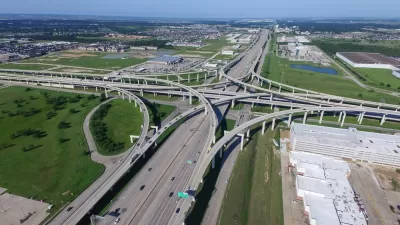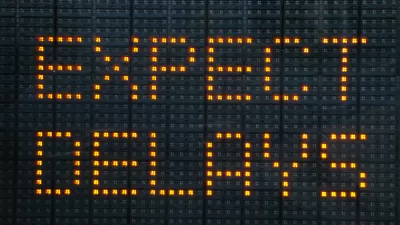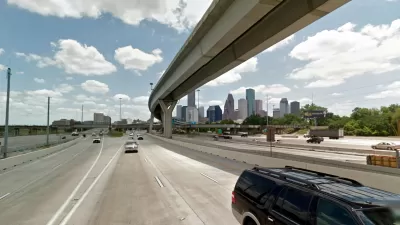CityLab University tackles a widely misunderstood concept: induced demand.

CityLab University endeavors to provide clear explanations of some of the "most important concepts related to cities and urban policy." A previous post explained inclusionary zoning, for instance. For the most recent post, Benjamin Schneider explains the concept of induced demand, or why new road capacity doesn't reduce traffic.
Launching the explanation with the example of the Katy Freeway in Houston, which has 26 lanes at its widest point, and still sees worsening congestion.
The idea that the Katy Freeway could expand to such capacity and still see regular congestion is explained by induced demand. While Schneider goes into a lot more detail in the source article, here are the key points that organize the article:
- In urbanism, “induced demand” refers to the idea that increasing roadway capacity encourages more people to drive, thus failing to improve congestion.
- Since the concept was introduced in the 1960s, numerous academic studies have demonstrated the existence of ID.
- But some economists argue that the effects of ID are overstated, or outweighed by the benefits of greater automobility.
- Few federal, state, and local departments of transportation are thought to adequately account for ID in their long-term planning.
FULL STORY: CityLab University: Induced Demand

Alabama: Trump Terminates Settlements for Black Communities Harmed By Raw Sewage
Trump deemed the landmark civil rights agreement “illegal DEI and environmental justice policy.”

Study: Maui’s Plan to Convert Vacation Rentals to Long-Term Housing Could Cause Nearly $1 Billion Economic Loss
The plan would reduce visitor accommodation by 25% resulting in 1,900 jobs lost.

Planetizen Federal Action Tracker
A weekly monitor of how Trump’s orders and actions are impacting planners and planning in America.

Federal Homelessness Agency Places Entire Staff on Leave
The U.S. Interagency Council on Homelessness is the only federal agency dedicated to preventing and ending homelessness.

Restoring Northern India’s Himalayan ‘Water Temples’
Thousands of centuries-old buildings protect the region’s natural springs and serve as community wells and gathering places.

Milwaukee to Double Bike Share Stations
Bublr Bikes, one of the nation’s most successful, will add 500 new e-bikes to its system.
Urban Design for Planners 1: Software Tools
This six-course series explores essential urban design concepts using open source software and equips planners with the tools they need to participate fully in the urban design process.
Planning for Universal Design
Learn the tools for implementing Universal Design in planning regulations.
Caltrans
Smith Gee Studio
Institute for Housing and Urban Development Studies (IHS)
City of Grandview
Harvard GSD Executive Education
Toledo-Lucas County Plan Commissions
Salt Lake City
NYU Wagner Graduate School of Public Service





























